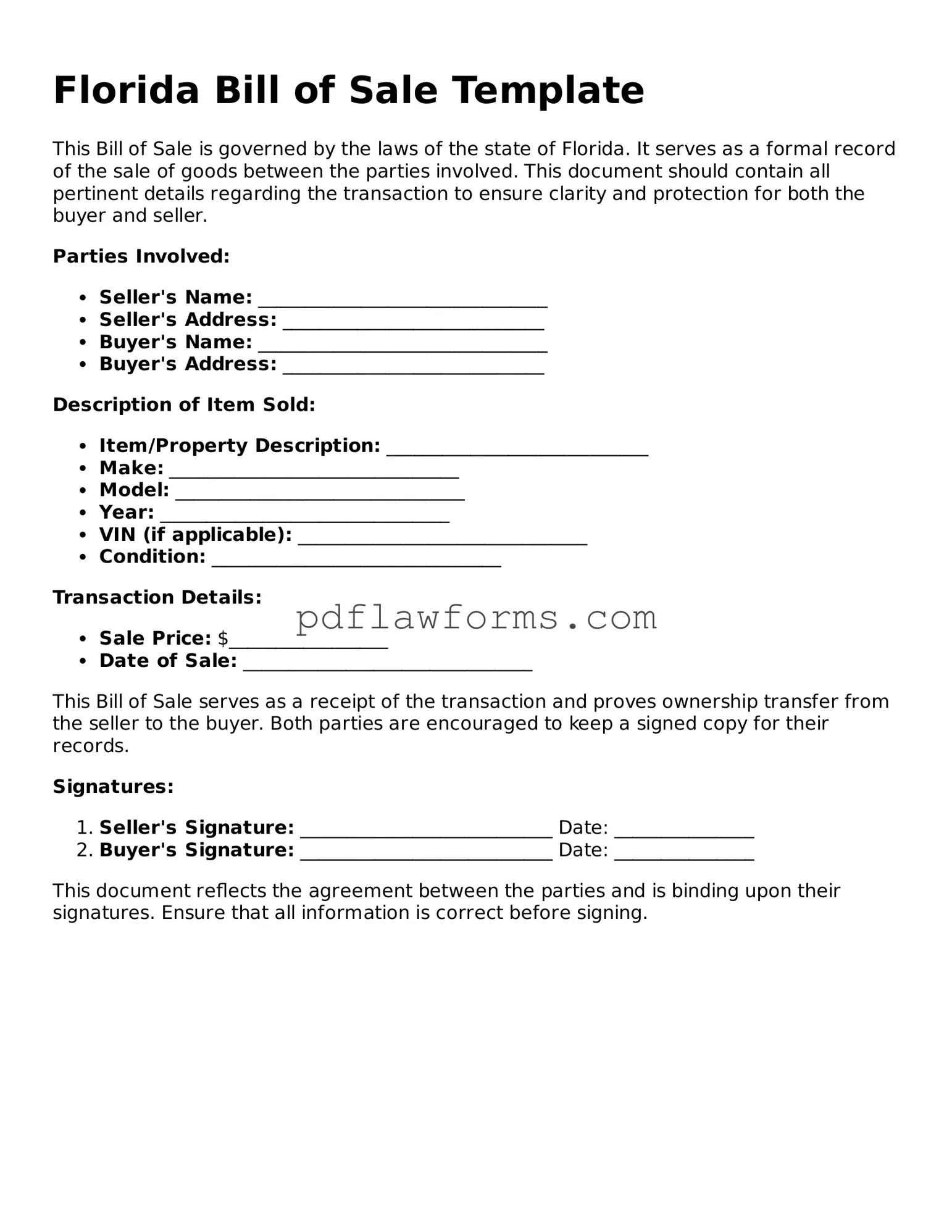Filling out the Florida Bill of Sale form can seem straightforward, but many people make common mistakes that can lead to complications later. One of the most frequent errors is not providing complete information. Buyers and sellers need to include their full names, addresses, and contact information. Missing any of these details can create confusion and may even invalidate the sale.
Another common mistake is failing to accurately describe the item being sold. It's essential to include the make, model, year, and Vehicle Identification Number (VIN) for vehicles. For other items, a detailed description helps clarify what is being transferred. Without this information, disputes may arise about what was sold.
Many individuals overlook the importance of signatures. Both the buyer and seller must sign the Bill of Sale for it to be valid. A signature from only one party can lead to legal issues down the road. Additionally, forgetting to date the document can complicate matters, especially if there are questions about when the transaction took place.
People often make the mistake of not providing a purchase price. This information is critical for both parties. It establishes the value of the transaction and can have tax implications. Leaving this blank can raise questions later about the legitimacy of the sale.
Another issue arises when individuals do not keep a copy of the Bill of Sale. Once the transaction is complete, both parties should retain a copy for their records. This document serves as proof of ownership and can be crucial if disputes arise in the future.
Sometimes, people fail to check for any outstanding liens on the item being sold. For vehicles, this is particularly important. If there is a lien, the seller must address it before completing the sale. Not doing so can leave the buyer with unexpected financial obligations.
Finally, some individuals neglect to understand local regulations regarding the Bill of Sale. Different counties in Florida may have specific requirements or additional forms that need to be completed. Ignoring these regulations can lead to problems with registration or ownership transfer.
